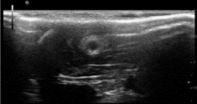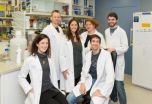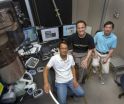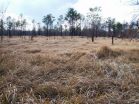(Press-News.org) CHAMPAIGN, Ill. — Practicing hatha yoga three times a week for eight weeks improved sedentary older adults' performance on cognitive tasks that are relevant to everyday life, researchers report.
The findings involved 108 adults between the ages of 55 and 79 years of age, 61 of whom attended hatha yoga classes. The others met for the same number and length of sessions and engaged in stretching and toning exercises instead of yoga.
At the end of the eight weeks, the yoga group was speedier and more accurate on tests of information recall, mental flexibility and task-switching than it had been before the intervention. The stretching-and-toning group saw no significant change in cognitive performance over time. The differences seen between the groups were not the result of differences in age, gender, social status or other demographic factors, the research team reported.
Hatha yoga is an ancient spiritual practice that involves meditation and focused breathing while an individual moves through a series of stylized postures, said Neha Gothe, who led the study with University of Illinois kinesiology and community health professor Edward McAuley. Beckman Institute director Arthur Kramer also contributed to the study. Gothe is now a professor at Wayne State University.
"Hatha yoga requires focused effort in moving through the poses, controlling the body and breathing at a steady rate," Gothe said. "It is possible that this focus on one's body, mind and breath during yoga practice may have generalized to situations outside of the yoga classes, resulting in an improved ability to sustain attention."
"Participants in the yoga intervention group showed significant improvements in working memory capacity, which involves continually updating and manipulating information," McAuley said. "They were also able to perform the task at hand quickly and accurately, without getting distracted. These mental functions are relevant to our everyday functioning, as we multitask and plan our day-to-day activities."
Previous studies have found that yoga can have immediate positive psychological effects by decreasing anxiety, depression and stress, Gothe said.
"These studies suggest that yoga has an immediate quieting effect on the sympathetic nervous system and on the body's response to stress," she said. "Since we know that stress and anxiety can affect cognitive performance, the eight-week yoga intervention may have boosted participants' performance by reducing their stress."
The results of the study are only preliminary and involve a fairly short-term intervention, the researchers said. Further research is needed to confirm the results and reveal the underlying brain mechanisms at play.
INFORMATION:
The team reported its findings in The Journals of Gerontology Series A: Biological Sciences and Medical Sciences. The National
Editor's notes:
To reach Neha Gothe, call 313-577-6222; email nehagothe@wayne.edu.
To reach Edward McAuley, call 217-333-6487; email emcauley@illinois.edu
The paper, "The effects of an 8-week hatha yoga intervention on executive function in older adults," is available online or from the U. of I. News Bureau.
Study suggests hatha yoga boosts brain function in older adults
2014-08-18
ELSE PRESS RELEASES FROM THIS DATE:
The double threat of climate and land use change enhances risks to biodiversity
2014-08-18
Researchers from Aarhus University, Denmark, and the University of Wisconsin-Madison, USA, have developed a new approach to measure the combined exposure of species to both climate and land use change. This new metric was used to assess the risk to species in the face of combined rates of climate and land use for the US from 2001 to 2051.
Their results, which have just been published in Nature Climate Change, highlight areas expected to be most vulnerable to losses in biodiversity and ecosystem function due to the individual or combined effects of climate and land use ...
BGRF announces OncoFinder algorithm for reducing errors in transcriptome analysis
2014-08-18
Scientists from the Biogerontology Research Foundation (BGRF), a UK-based charity founded to support ageing research and address the challenges of a rapidly ageing population, propose a new concept for signalome-wide analysis of changes in intracellular pathways, called OncoFinder, which allows for accurate and robust cross-platform analysis of gene expression data. This new technique will allow scientists to derive useful information from and compare the hundreds of thousands of data sets obtained using legacy equipment as well as data sets obtained from biological samples ...
Ultrasound imaging of chitosan nerve conduits that bridge sciatic nerve defects in rats
2014-08-18
New simple and effective methods are needed to better evaluate the outcomes of repair using nerve conduits in vivo. Ultrasound is a common noninvasive clinical detection modality that has been used in many fields. However, ultrasound has only rarely been used to observe implanted nerve conduits in vivo. Hongkui Wang and co-workers from Affiliated Hospital of Nantong University report the first use of ultrasound to noninvasively observe the changes in chitosan nerve conduits implanted in rats over time. The ultrasound imaging clearly showed whether there are unsatisfactory ...
An inside-out vein graft filled with PRP for repair of a short sciatic nerve defect
2014-08-18
Platelet-rich plasma (PRP) containing various growth factors can promote nerve regeneration. An inside-out vein graft can substitute nerve autograft to repair short nerve defects. It is hypothesized that an inside-out vein graft filled with platelet-rich plasma shows better effects in the repair of short sciatic nerve defects. In a study reported on the Neural Regeneration Research (Vol. 9, No. 14, 2014), an inside-out vein autograft filled with platelet-rich plasma was used to bridge a 10 mm-long sciatic nerve defect in rats. At 6 and 8 weeks, the sciatic nerve function ...
Club cells are 'bad guys' during flu infection
2014-08-18
A specialized subset of lung cells can shake flu infection, yet they remain stamped with an inflammatory gene signature that wreaks havoc in the lung, according to a study published in The Journal of Experimental Medicine.
Seasonal flu is caused by influenza virus, which can infect a variety of cell types in the lung. Infected cells are typically destroyed by the virus itself or by immune cells that attack infected cells. The resulting inflammation can linger on long after the virus has been eliminated leading to persistent symptoms and, in some cases, severe tissue damage.
Club ...
Myc inhibition is an effective therapeutic strategy against most aggressive brain tumors
2014-08-18
Barcelona, 18 August 2014. Research led by the Vall d'Hebron Institute of Oncology (VHIO) evidence the most conclusive preclinical results to-date validating Myc inhibition as a therapeutic strategy in glioma – a highly agressive tumor type that notoriously outsmarts current anti-cancer therapies. The study led by Laura Soucek, Principal Investigator of VHIO´s Mouse Models of Cancer Therapies Group, published today in Nature Communications, not only represents an important step forward in ultimately providing brain glioma patients with new therapeutic avenues, but also ...
Sun's activity influences natural climate change
2014-08-18
For the first time, a research team has been able to reconstruct the solar activity at the end of the last ice age, around 20,000-10,000 years ago, by analysing trace elements in ice cores in Greenland and cave formations from China. During the last glacial maximum, Sweden was covered in a thick ice sheet that stretched all the way down to northern Germany and sea levels were more than 100 metres lower than they are today, because the water was frozen in the extensive ice caps. The new study shows that the sun's variation influences the climate in a similar way regardless ...
Antibiotics in early life may alter immunity long-term
2014-08-18
New University of British Columbia research found that receiving antibiotic treatments early in life can increase susceptibility to specific diseases later on.
Most bacteria living in the gut play a positive role in promoting a healthy immune system, but antibiotic treatments often do not discriminate between good and bad bacteria. The study published today in Journal of Allergy and Clinical Immunology helps scientists understand how different antibiotics affect good bacteria.
"This is the first step to understanding which bacteria are absolutely necessary to develop ...
Promising ferroelectric materials suffer from unexpected electric polarizations
2014-08-18
UPTON, NY—Electronic devices with unprecedented efficiency and data storage may someday run on ferroelectrics—remarkable materials that use built-in electric polarizations to read and write digital information, outperforming the magnets inside most popular data-driven technology. But ferroelectrics must first overcome a few key stumbling blocks, including a curious habit of "forgetting" stored data.
Now, scientists at the U.S. Department of Energy's Brookhaven National Laboratory have discovered nanoscale asymmetries and charge preferences hidden within ferroelectrics ...
International scientific team criticizes adoption of 'novel ecosystems' by policymakers
2014-08-18
Embracing "novel" ecosystems is dangerous, according to a new study by an international team.
Novel ecosystems arise when human activities transform biological communities through species invasions and environmental change. They are seemingly ubiquitous, and thus many policymakers and ecologists argue for them to be accepted as the "new normal"—an idea the researchers say is a bad one.
In the study, published in the September edition of the academic journal Trends in Ecology and Evolution, the international team argues that adopting novel ecosystems is based on faulty, ...







